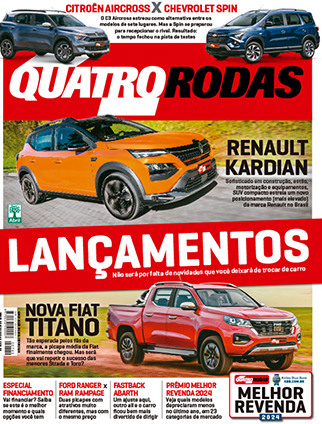Inglês: Interpretação – Distant peak car
Carmakers worry that one day demand for cars will stop rising. But that is a long way off

THEY PREFER WALKING Youngs’ interest in owning a car is decreasing
In 1924 Ford ran an advertisement headlined “His First Car”, urging fathers to buy their teenage sons their first set of wheels. The idea caught on. For boys, especially, learning to drive became an essential part of growing up. By the late 1970s 86% of American 18-year-olds – of both sexes – had a driving licence. But then the trend went into reverse: researchers at the University of Michigan found that in 2010 only 61% of 18-year-old Americans had licences. Other rich countries are going the same way. Teenagers are showing less interest in cars as they turn their attention to smartphones and social networking.
This is a worry for carmakers, who are wondering where their future customers are going to come from. In the two decades to 2008 the number of miles driven by Americans in their 20s fell by 8%. In Britain a study for the RAC Foundation, a transport-research body, found a 30% drop among men in the same age group between 1996 and 2006.
One reason for concern is that half the world’s population now lives in towns and cities, which have only so much space for cars. Even in rapidly growing car markets such as China, city governments in the more prosperous parts of the country are beginning to restrict new car registrations and invest heavily in public transport.
Young urban residents may also be meeting up less often in person, thanks to social-networking sites that let them keep in touch digitally. So they have less need for a car, and when they do need one they turn to car clubs, which offer rental by the hour in their neighbourhood, and to car-sharing schemes. In particular, the generation who came of age after 2000, the so-called “millennials”, express a preference for having access to rather than owning cars. But some of that may be just talk. In a survey by McKinsey, American millennials said they expected to use car clubs in the future, but when asked if owning a car would remain an important status symbol, they were much more likely to answer “yes” than older consumers.
Economic factors, too, work against car ownership. Sheryl Connelly, Ford’s “global trends and futuring” manager, notes that a few decades ago teenagers in America often got free driving lessons at school, but now they may have to pay up to $800 for them before they can sit their test. The cost of adding a young driver to the family’s car-insurance policy too has risen sharply, she says. In Britain the RAC Foundation study found that fewer young men are driving because their employers have cut back on providing company cars.
However, studies also show a marked rise in the proportion of elderly people with driving licences. Baby boomers pretty much all learned to drive, and now that they are beginning to retire they expect to continue motoring. The development of assisted driving, followed one day by fully automated cars, will allow them to stay mobile for much longer.
What may be happening in rich countries is a one-off shift in the timing of people’s driving careers, so that they start later but then continue well into old age. This may be no bad thing for carmakers. It has long been an open secret in the business that cars are advertised as being for the young but are bought mainly by the middle-aged with the necessary disposable income. In America the average Mercedes buyer is in his late 50s, and even the supposedly youth-oriented Mini Cooper is typically bought by people in their early 40s. The world’s biggest car markets – China, North America and Europe – are all greying.
So it is not clear that declining car ownership among young ur- banites will have more than a marginal effect on overall car sales. Besides, argues Renault-Nissan’s Mr Ghosn, for most people “their car is more than an object.” For some it is an extension of their home, he says, and most people would rather not share their home. For others it is their pet, and who wants to share their pet?
All in all, “peak car”– the point at which worldwide demand for cars will stop rising – still seems quite a long way off. In the rich world some of the economic factors that have deterred young people from taking up driving will fade away: as cars become increasingly self-piloting and accident rates fall, insurance costs should decrease, and in time there will be little or no need to take expensive lessons.
The Economist, April 20th, 2013 (Vestibular ITA 2014)
EXERCÍCIOS – ITA 2014 (ADAPTADO)
1. Uma das razões para o menor uso de carros por jovens nos últimos anos é o(a):
a) desinteresse em usar carro como símbolo de status social.
b) realização de festas em clubes particulares.
c) falta de segurança nas grandes cidades.
d) uso de redes sociais digitais.
e) i nsuficiência de estacionamentos e alto custo das vagas privativas.
2. Assinale a opção em que a retirada do termo em negrito compromete o sentido da oração.
a) “For boys, especially, learning to drive became an essential part of growing up”.
b) “… to restrict new car registrations and invest heavily in public transport”.
c) “ … they were much more likely to answer ‘yes’ than older consumers”.
d) “The cost of adding a young driver to the family’s car- insurance policy too has risen sharply …”.
e) “ … cars are advertised as being for the young but are bought mainly by the middle-aged …”.
3. Considere as sentenças:
I. A geração millennials não se incomoda com status social.
II. A geração millennials já atingiu os 40 anos de idade.
III. A geração baby boomers faz parte dos apreciadores da fabricante de carros Mercedes.
Está(ão) correta(s):
a) apenas I.
b) apenas II.
c) apenas III.
d) apenas I e II.
e) apenas I e III.
4. Assinale a opção em que o emprego sintático do item lexical that é diferente dos demais.
a) “… researchers at the University of Michigan found that…”.
b) “One reason for concern is that...”.
c) “… thanks to social-networking sites that…”.
d) “ Sheryl Connelly, Ford’s “global trends and futuring” manager, notes that…”.
e) “So it is not clear that…”.
5. De acordo com o texto, a expressão “a long way off” pode ser entendida como:
a) eminente retrocesso.
b) acontecimento a longo prazo.
c) grande possibilidade.
d) evento fora de cogitação.
e) preocupação factível.
RESPOSTAS
1. Analisando as alternativas:
a) Para a geração do milênio, o carro ainda representa um símbolo de status. A ideia está explícita no trecho “…when asked if owning a car would remain an important status symbol, they were much more likely to answer ‘yes’ than older consumers.” Incorreta.
b) A única menção a “club” está no trecho “… they turn to car clubs, which offer rental by the hour in their neighbourhood…” (eles recorrem a clubes, que alugam por hora em sua vizinhança). Incorreta.
c) Não há referência a falta de segurança. Incorreta.
d) Veja o trecho. “Teenagers are showing less interest in cars as they turn their attention to smartphones and social networking” (Os adolescentes estão mostrando menos interesse por carros, uma vez que voltam a atenção para smartphones e redes sociais). Correta.
e) O texto não menciona custos com estacionamento. Incorreta.
Resposta: D
2. Analisando as alternativas:
a) O advérbio “especially” (principalmente, especialmente) pode ser retirado da frase sem comprometer o sentido: “Para os rapazes, aprender a dirigir tornou-se parte essencial do crescimento”. Incorreta.
b) D a mesma forma, “heavily” (pesadamente), se retirado, não muda o sentido de “investir em transporte público”. Incorreta.
c) Já “likely” na frase em questão não é um advérbio, mas um adjetivo que faz parte da expressão “to be likely” (ser provável, ser propenso). Portanto, se for retirado, a frase perde o sentido. Correta.
d) “Sharply” (acentuadamente) é um advérbio que dá ênfase ao verbo “has risen”. Se eliminado, não altera o sentido da frase: “o custo por acrescentar um motorista jovem à apólice de seguro de automóvel familiar tem aumentado”. Incorreta.
e) “Mainly” (principalmente) também é um advérbio que, cortado, não alteraria o sentido da frase. Veja: “carros são apresentados como objeto para jovens, mas são comprados por pessoas de meia-idade.” Incorreta.
Resposta: C
3. Analisando cada uma das alternativas:
I. A geração do milênio ainda considera o carro próprio um símbolo de status. No trecho “… when asked if owning a car would remain an important status symbol, they were much more likely to answer ‘yes’…” (quando perguntados se possuir um carro ainda é um símbolo de status, eles são muito mais propensos a responder ‘sim’). Incorreta.
II. Veja o trecho “the generation who came of age after 2000, the so-called ‘millennials”. “Came of age” signifca “atingir a maio- ridade”. Então, as pessoas da geração do milênio de que trata o texto teriam, em 2014, perto de 30 anos. Incorreta.
III. “Baby boomers” refere-se às pessoas nascidas na explosão de natalidade entre os anos 1946 e 1964. Então, os baby boomers têm, hoje, entre 50 e 68 anos de idade. Analise, agora, a frase “in America the average Mercedes buyer is in his late 50s” (nos EUA, o comprador médio de Mercedes tem perto de 60 anos). Como essa idade corresponde à idade dos baby boomers, concluímos que essas pessoas fazem parte da geração que aprecia carros Mercedes.
Correta.
Resposta: C
4. Analisando as alternativas:
a) Na sentença apresentada, (… pesquisadores da Universidade de Michigan descobriram que…), “that” é uma conjunção (usada para ligar ou correlacionar duas orações).
b) “ That” também é conjunção nesta frase (uma razão para preocupação é que…).
c) M as nesta sentença (… graças aos sites de redes sociais que…), “that” tem a função de pronome relativo. Refere-se a “sites de redes sociais” e pode pode ser substituído por “os quais”.
d) Na frase proposta nesta alternativa (Sheryl Connelly, gerente de tendências globais futuras da Ford, observa que…), novamente “that” é uma conjunção.
e) N esta expressão, “that” é conjunção: “Então, não está claro que…”
Resposta: C
5. A expressão “a long way off” significa “distante no tempo”. Em tradução livre, a sentença “all in all, ‘peak car’… still seems quite a long way off” poderia ser traduzida como “de modo geral, a estag- nação da demanda global por carros ainda parece muito longe de acontecer”. De todas as alternativas apresentadas, o termo que mais corresponde a esse significado é “acontecimento a longo prazo”.
Resposta: B









